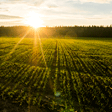- Home >
- Our Actions >
- Ambassador report
5
Comments
How do you actually store food & why you should? |
|---|
|
Imagine you are having your dinner with your doting family. The food is great and you had a nice conversation with them. But what do you do with the leftover food?
About one- third of your(not just you but everyone's) food is either lost or wasted. This makes up about approximately 1.3 billion tonnes every year.1 You might think it is okay to waste food but you must know that food waste generates 3.3 billions tons of carbon dioxide, which accelerates global climate change.2 So us as nature lovers how can we reduce the food wastage? Just like saving water, we store food. Part of the food wastage is due to not storing correctly. Well, how can we store our food in the right way? In a kitchen, pantry, refrigerator and freezer are the most common places to store foods. However, people tend to mixed up these places and store the wrong types of foods. This causes unwanted food wastage in household. What they need to know is that different types of food require different types of storage. Some vegetables just want to breathe and be free, while others will only stay crisp in that special refrigerator door. Refrigerator is the most common place for households to keep their food. It is because it provide a cold and dry or moist condition. Refrigeration can substantially reduce the rate at which food will deteriorate. Low temperatures slow down the growth of microorganisms and the rate of chemical (including enzymic) changes in food.3 These are two of the main causes of food spoilage. Perishable food includes fruits and vegetables, fresh meat, foods purchased from chill cabinets, freshly cooked food stored to be used later. It is usually stored in the refrigerator. Some fresh fruits and vegetables, however, will store quite well out of the refrigerator as long as they are stored in a cool place. Besides that, pantry. Pantry is commonly used for storing food before transfer them to refrigerator. For dry and canned goods, a pantry?s temperature should fall between 50 degrees and 70 degrees Fahrenheit. Pantries should be clean, dark, dry and cool. Use the ?First in, first out? system for rotating dry and canned goods in your pantry to cut down on wasted product. Check dates regularly, and also inspect cans for signs of spoilage, such as cracks, bulges or leaks. In conclusion, we all should also change our lifestyle to be greener to be able to reduce our harm to environment. Saving water and saving electricity is important, but saving food is as equally important and yet it is overlooked by many. So lets store our food in correct way and dont waste food. Together we can make the Earth a greener place. =) Reference 1. http://www.fao.org/save-food/resources/keyfindings/en/ 2. https://foodtank.com/news/2015/06/world-environment-day-10-facts-about-food-waste-from-bcfn/ 3. https://books.google.com/books?isbn=8173871086
|
|
|










 Previous : Waste affecting marine wildlif...
Previous : Waste affecting marine wildlif...









5 Comments
its impact can be observed easily.
Posted 02-02-2018 16:00
we actually follow wrong step
Posted 02-02-2018 15:59
Thanks for the interesting report! I like how you provided an explanation as to why some foods should be kept in the refrigerator. I would love to know if there are also foods that you specifically have to store at room temperature. For example, I've heard that tropical fruits such as bananas shouldn't be stored in the fridge. Overall, I think your report was very fun to read. I'll be looking forward to your future work!
Posted 09-09-2017 10:40
Great work! I agree to your point that smart storing is the first step to reduce the food wastage. Not only helpful to minimize food waste but also to find food easily maybe :) Thanks for your report!
Posted 08-09-2017 17:37
Thanks for the information
Posted 06-09-2017 15:26